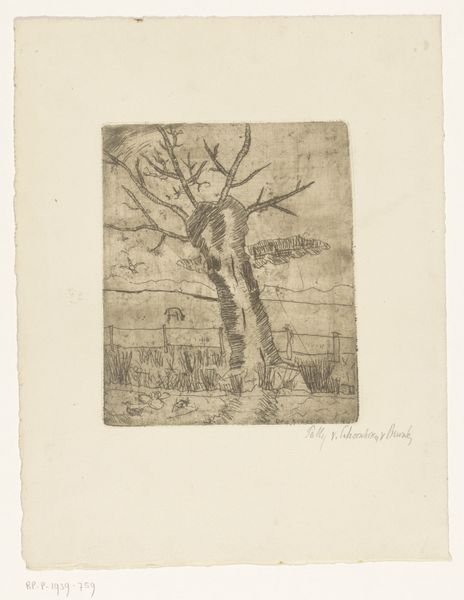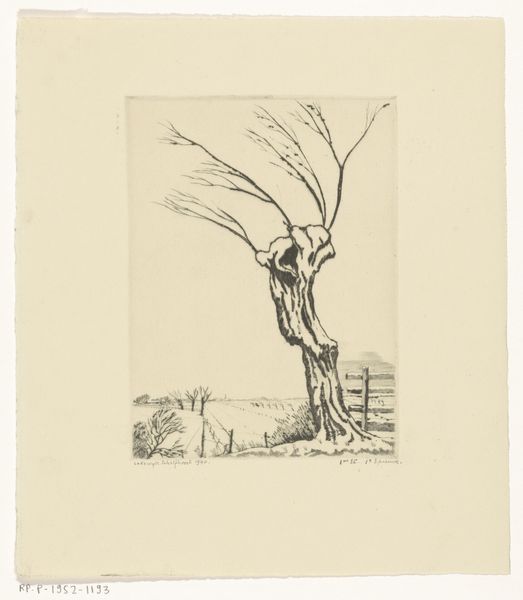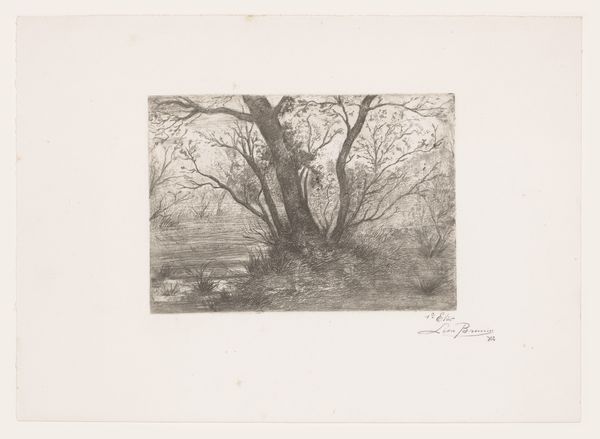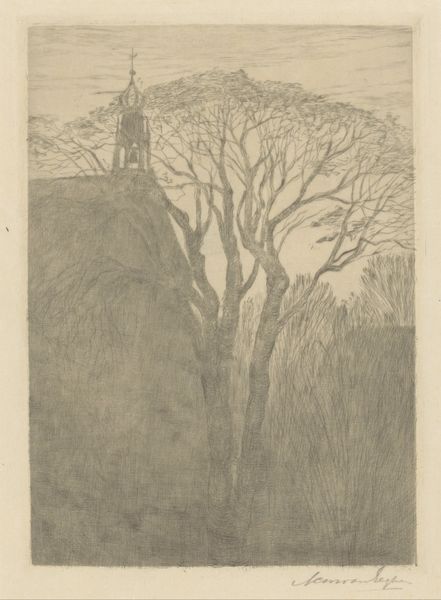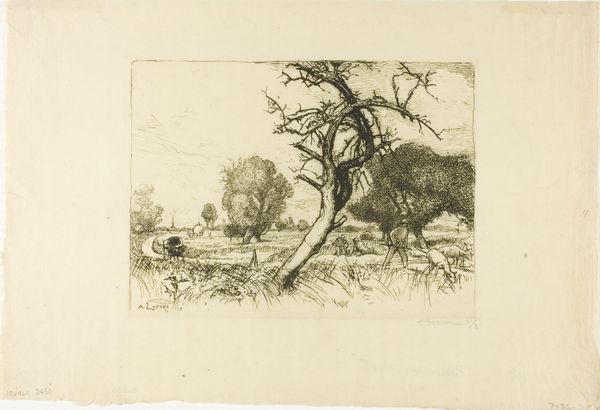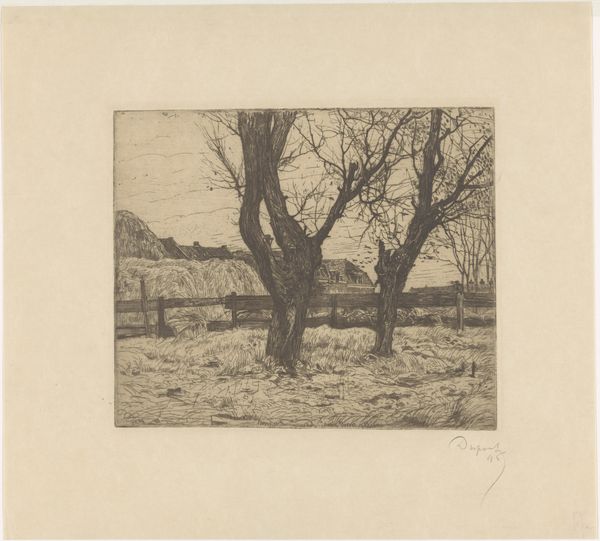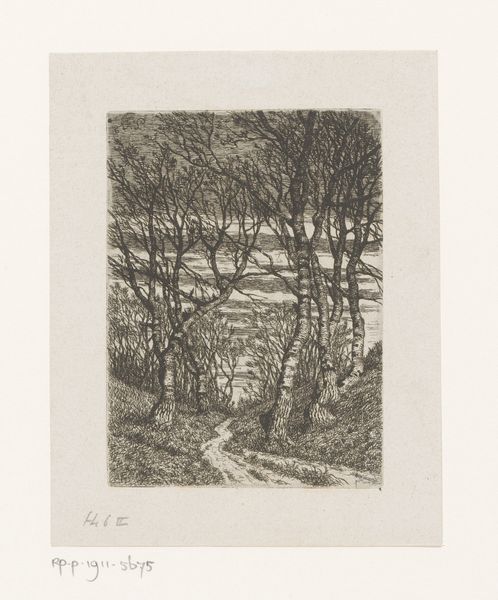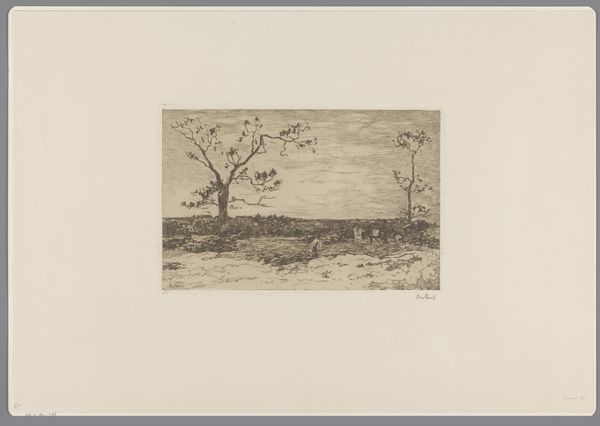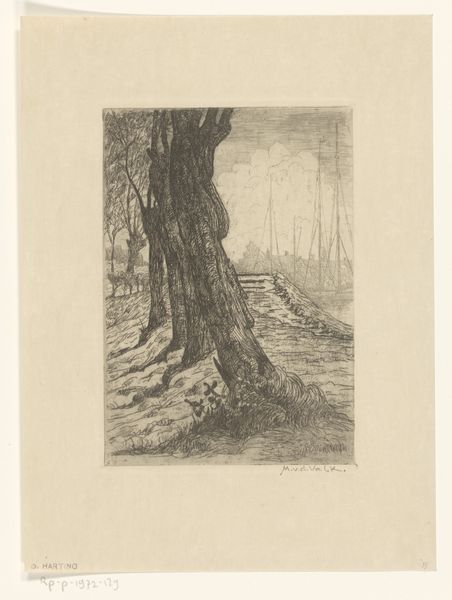
print, etching
#
tree
# print
#
etching
#
landscape
#
monochrome
Dimensions: height 110 mm, width 80 mm
Copyright: Rijks Museum: Open Domain
Curator: Willem de Zwart created this etching around 1889 or 1890, a work titled "Boom in een veld" – "Tree in a Field." Editor: It’s wonderfully bleak, isn't it? Almost minimalist in its composition. The stark monochrome palette really emphasizes the bare tree, standing against a barely-there background. There's a certain vulnerability in its isolation. Curator: De Zwart was, of course, working within a long tradition of landscape art. Etching allowed for relatively inexpensive reproduction, meaning such images could reach a wider audience, shaping popular conceptions of the Dutch countryside. This, however, goes beyond straightforward representation. Editor: Absolutely. Considering the time period, one cannot ignore the burgeoning symbolist movement. Is this solitary tree a metaphor? A representation of resilience, perhaps, against the backdrop of societal change and industrial growth impacting the natural landscape? It feels charged with the potential for multiple readings, even within the quiet domesticity of the scene. The fact it's just a tree, yet so commanding of our attention... Curator: Its very existence within a cultural milieu dealing with issues such as urbanization and burgeoning capitalism lends it resonance beyond simply depicting nature. The question is whether artists sought to critique the exploitation of labor and nature? I wonder, for instance, about De Zwart's political engagements, and how those might illuminate his art production. What class perspective, what social advocacy? These contextual details invite richer interpretation. Editor: Indeed. Viewing art is never a passive experience. It reflects—and often refracts—the lived experiences of the artist and their society. Looking at it, in this historical moment, I can’t help thinking about deforestation, resource extraction, about humanity’s impact. Its quiet starkness becomes, now, a potent symbol of loss, resilience, or even resistance. Curator: Such connections help the work remain alive, culturally relevant. Editor: Exactly. It becomes more than just an etching, doesn’t it? It turns into a site of reflection.
Comments
No comments
Be the first to comment and join the conversation on the ultimate creative platform.
